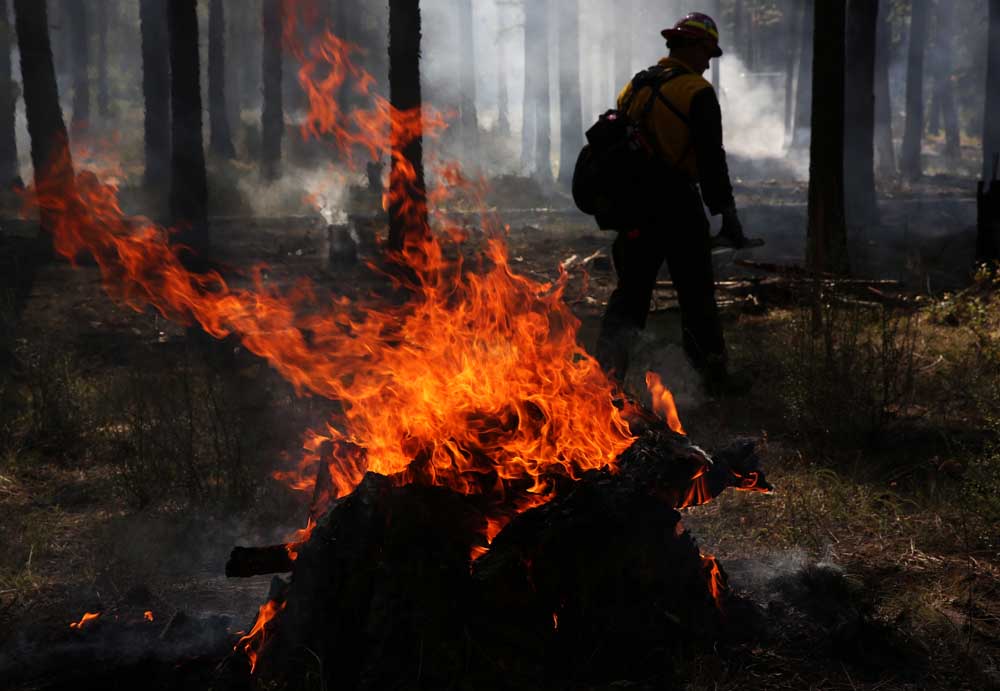Commentary: Central Oregon irrigation districts’ vision pays off
Published 1:00 am Tuesday, January 2, 2024

- Dan Keppen
Throughout most of the past year, there has been much written about the innovative work undertaken by the irrigation districts in the Deschutes Basin of Central Oregon. Farmers served by those districts have been dealing with risks and uncertainties to their water supplies for years.
I remember attending a local water meeting in Bend over 15 years ago, not long after the farmers here in the Klamath Basin had their water curtailed for the first time in 95 years, to meet the alleged needs of suckers and salmon on the Endangered Species Act (ESA) list. I was impressed that the Deschutes stakeholders were committed to avoiding the conflict, litigation and media attacks that characterized all things Klamath back then.
Still, challenges associated with ESA litigation eventually crept into the Deschutes Basin, too. The U.S. Fish and Wildlife Service listed the bull trout and the Oregon spotted frog as “threatened” under the ESA, while the National Marine Fisheries Service listed the Mid-Columbia steelhead as “threatened” under the ESA, as well. All three species are present in the Deschutes Basin.
Litigious environmental groups used those ESA listings to seek a court order that would effectively end all irrigation storage in the Deschutes Basin. The water users fought back and defeated the environmental groups’ motion for injunctive relief that would have put at risk the water supplies for some 150,000 acres of irrigated farmland in the basin.
The water users and their irrigation districts took matters into their own hands. The eight irrigation districts belonging to the Deschutes Basin Board of Control (DBBC) developed the Deschutes Basin Habitat Conservation Plan (HCP), the result of over 12 years of studies and negotiations between all interested parties in the basin.
The HCP sets the course for conservation efforts for the next 30 years. It also provides the districts with both a pathway and time for modernizing their delivery systems through canal piping and other projects.
Of course, there are the usual armchair quarterbacks who believe the HCP does not do enough, or does not do things quickly enough, for fish and wildlife. Unfortunately, the foresight and leadership shown by the DBBC districts has been ignored by some critics who wring their hands over the cost of these projects and decry the taxpayer dollars that help support their development.
Right now, the federal government is busy spending over $1.33 trillion included in the 2021 Bipartisan Infrastructure Law (BIL) and 2022 Inflation Reduction Act for national infrastructure, energy security and climate change actions. The dollars dedicated to the Bureau of Reclamation for water infrastructure projects total just $12.3 billion, or less than 1% of all the infrastructure funds.
Frankly, we’re happy to see some of those dollars go to valuable water and environmental projects in our own state.
To date, Central Oregon irrigation districts have successfully implemented over $53 million in projects conserving over 12,000 acre-feet annually, ensuring more water for farmers, food and fish. Plans have already been developed to save even more water, at a cost of additional millions.
The Family Farm Alliance three years ago helped lead a coalition of over 220 Western organizations that drove the efforts to secure those BIL Western funding provisions. The modernization projects already completed by Central Oregon districts were a huge selling point that helped us successfully demonstrate to Congress that funding more of these multi-benefit projects would be a good national investment.
The districts are working together and with constructive conservation groups, local cities, and government agencies to balance the Deschutes so there is water for all river beneficiaries, including farms.
It was this collective effort that opened the door to many millions of dollars of investments in the modernization of basin infrastructure.
And it’s this same collective effort that is needed to secure drought relief, facilitate voluntary water right transfers between farmers, and generate support and funding for larger-scale water management projects that benefit farmers, ranchers, fish and wildlife.








